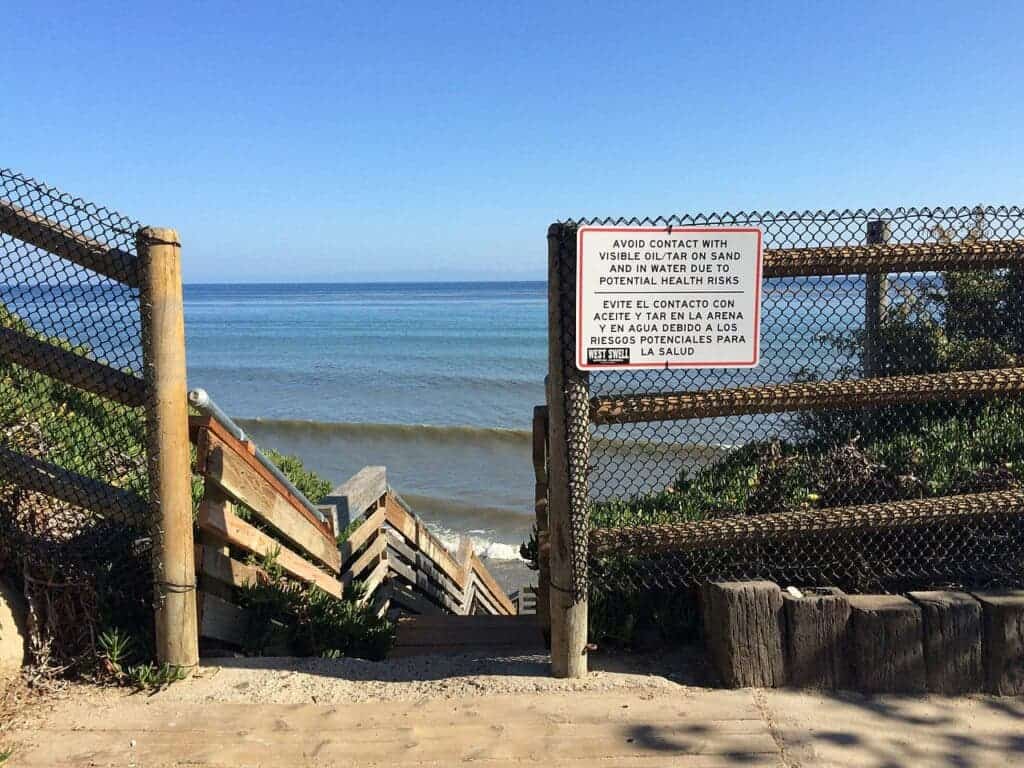More than 120,000 gallons of oil have spilled into the Pacific Ocean following a leak at an oil pipeline off the coast of Southern California. While the leak appears to have stopped now, major removal efforts are underway by government officials and volunteers to avoid long-term impacts on the environment – especially on birds and marine life.

The breach of the pipeline was initially reported on Saturday five miles away from Huntington Beach in Orange County, leaking the equivalent of an estimated 3,000 barrels of post-production crude, according to local officials. Amplify Energy, the company that owns the pipeline, said they are still exploring the reasons for the leak.
The Coast Guard said the spill currently covers 13 square miles, stretching from Huntington Beach to Laguna Beach, and is likely to expand south based on wind and currents. Captain Rebecca Ore described it as “isolated patches” of oil that are constantly changing. About 3,150 gallons have already been removed from the water.
There are 14 vessels on water monitoring the situation, as well as the Coast Guard. Authorities are particularly worried about seven locally sensitive sites such as the Bolsa Chica Ecological Reserve and the Talbert Marsh – both in the zone of the oil spill and home to about 90 bird species. The Oiled Wildlife Care Network reported having recovered three birds from the oil spill.
Oil spills and leaks take a massive toll on the environment. Whales, dolphins, and other marine mammals have difficulties breathing or even die after going through oil or breathing toxic fumes. Birds are also severely affected. If they get some oil on their feathers they can’t fly, clean themselves or even check their own body temperatures; for many, an oil spill equals doom.
A long track record
California’s shores have been affected by several oil spills over the years. In 1969 a spill of as much as 4.2 million gallons of crude oil happened near Santa Barbara. Then in 1990 an oil taken ran over its anchor and pictured its hull, leaking about 417,000 gallons of crude oil. The current spill could fill up to 20% of an Olympic-sized pool.
Government officials from California advised residents to avoid doing leisure activities on the coastline or the beach, suggesting those who may have been in touch with the spill to seek medical attention. The effects of oil on people include headache, vomiting, and eye and skin irritation, with children and older people more at risk.
Laguna Beach announced on Sunday it would close all beaches, while Newport Beach warned people to avoid contact with ocean water and areas impacted by oil. Sections of the shoreline of Huntington Beach were also closed, as Major Kim Carr described the spill as a “potential ecological disaster” and said to be doing everything they can.
The company behind the spill, Amplify Energy, has three oil platforms nine miles off the coast of California, set up between 1980 and 1984. It also manages a pipeline that transports oil from a processing platform to an onshore storage facility. AP found that the company has been cited 72 times for environmental and safety violations over the years.
“A spill of this magnitude is a disaster whenever it occurs, but this one occurred in an especially sensitive area at critical time, as many bird species head south for the winter,” Sarah Rose, executive director of Audubon California, said in a statement. “This spill is a reminder that petroleum and water are a dangerous mix along California’s precious coast.”









